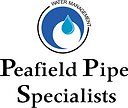In the intricate web of industrial operations, where precision and reliability are paramount, ensuring the structural integrity of equipment and pipelines is not just a preference but a necessity. Industrial facilities, ranging from chemical plants to offshore oil rigs, rely on a multitude of interconnected systems to function seamlessly. And at the heart of guaranteeing their safe and efficient operation lies hydrostatic pressure testing. This method, often heralded as the unsung hero of industrial quality assurance, plays a pivotal role in ensuring the durability and safety of critical components. In this article, we will dive into the world of hydrostatic pressure testing, exploring its significance, methodologies, and its indispensable role in various industrial applications.
The Crucial Significance of Hydrostatic Pressure Testing
In the industrial world, there is no room for error when it comes to safety and reliability. Catastrophic failures can result in not only substantial financial losses but also tragic human and environmental consequences. This is where hydrostatic pressure testing steps in as a vital guardian of industrial safety. Its primary purpose is to evaluate the structural integrity of pressure vessels, pipelines, and other critical equipment.
At its core, hydrostatic pressure testing involves subjecting a component to a controlled internal fluid pressure that exceeds its maximum allowable working pressure. This rigorous examination helps identify weaknesses, defects, or potential failures within the system. By doing so, it ensures that equipment can withstand the stresses and pressures it will encounter during regular operation, even in the most challenging conditions.
The Methodology Behind Hydrostatic Pressure Testing
Hydrostatic pressure testing is a meticulous process that follows a well-defined methodology to guarantee accurate results. The key steps involved in this testing procedure are as follows:
Preparation: Before the test begins, the component under examination must be thoroughly cleaned, inspected, and purged of any air or foreign matter. Safety protocols are put in place, including the use of personal protective equipment (PPE).
Pressurization: The component is filled with a suitable test fluid, typically water, to the specified test pressure. Care is taken to ensure that the fluid is free of any impurities or contaminants.
Stabilization: Once pressurized, the system is left to stabilize for a specified duration, usually ranging from a few minutes to several hours. During this time, inspectors monitor for any signs of leakage, deformation, or pressure drop.
Examination: Inspection personnel closely observe the component for any signs of stress, deformation, or leakage. Advanced measurement instruments may be used to record and analyze data, ensuring the accuracy of the test.
Recovery: After the test is completed successfully, the test fluid is safely drained from the component. It is then subjected to a thorough cleaning and inspection to ensure it is free of any residual fluid or contaminants.
Documentation: Comprehensive records of the testing process, including test pressures, duration, results, and any deviations from the expected behavior, are meticulously documented for future reference and compliance purposes.
Hydrostatic Pressure Testing in Industrial Applications
The versatility and effectiveness of hydrostatic pressure testing make it indispensable across a wide spectrum of industrial applications. Let’s explore some of the key areas where this testing method is vital:
Oil and Gas Industry: In the volatile environment of oil and gas extraction and transportation, pipelines and pressure vessels are subjected to extreme conditions. Hydrostatic pressure testing ensures that these critical components can withstand the high pressures and corrosive environments encountered in the industry.
Chemical Processing: Chemical plants handle hazardous materials and high-pressure processes. Pressure vessels and piping systems in these facilities undergo rigorous hydrostatic pressure testing to prevent catastrophic failures and chemical spills.
Aerospace and Aviation: The aerospace industry relies on hydrostatic pressure testing to validate the structural integrity of components like fuel tanks, hydraulic systems, and pressurized cabins. Ensuring the safety of aircraft and spacecraft is paramount.
Construction and Infrastructure: Large-scale infrastructure projects, such as bridges, dams, and water pipelines, require hydrostatic pressure testing to ensure their durability and ability to withstand environmental stresses.
Pharmaceutical and Food Processing: In these highly regulated industries, where product purity is crucial, pressure vessels and piping systems are tested to guarantee compliance with strict quality standards.
Manufacturing: Manufacturing facilities employ hydrostatic pressure testing to validate the integrity of components like boilers, heat exchangers, and pressure vessels, which are central to their production processes.
Renewable Energy: Hydrostatic pressure testing is used in the wind and solar energy sectors to ensure the reliability of hydraulic systems, pressure vessels, and storage tanks associated with energy generation and storage.
The Advantages of Hydrostatic Pressure Testing
The adoption of hydrostatic pressure testing in industrial applications offers a multitude of advantages:
Enhanced Safety: By identifying potential weaknesses in critical components, hydrostatic pressure testing reduces the risk of catastrophic failures, protecting both personnel and the environment.
Reliability Assurance: The rigorous testing process instills confidence in the reliability of equipment, minimizing downtime and costly repairs.
Compliance with Regulations: Many industries are subject to stringent regulatory requirements. Hydrostatic pressure testing helps organizations meet these standards and avoid fines and legal consequences.
Quality Control: Manufacturers use hydrostatic pressure testing to ensure the quality and consistency of their products, building trust with customers and clients.
Cost Savings: Detecting and addressing defects during testing can save organizations significant costs compared to post-failure repairs or replacements.
Environmental Protection: By preventing leaks and failures, hydrostatic pressure testing contributes to environmental preservation by minimizing the risk of hazardous material spills.
Conclusion
In the complex world of industrial applications, where the stakes are high and reliability is non-negotiable, hydrostatic pressure testing stands as an unsung hero. Its meticulous methodology, versatility, and ability to ensure safety and reliability make it an invaluable tool across a wide range of industries. As technology advances and industries evolve, hydrostatic pressure testing will continue to play a pivotal role in safeguarding lives, the environment, and the integrity of critical systems. Its silent presence, ensuring the structural soundness of industrial equipment, is a testament to its unwavering commitment to safety and quality in the industrial world.
